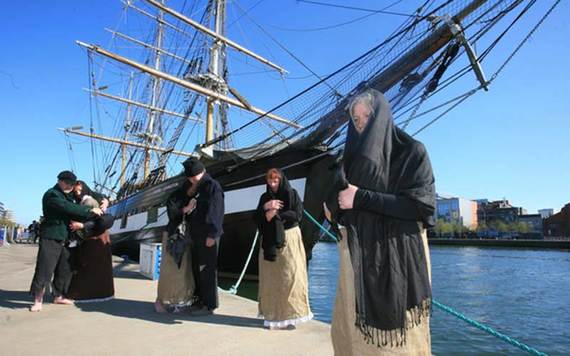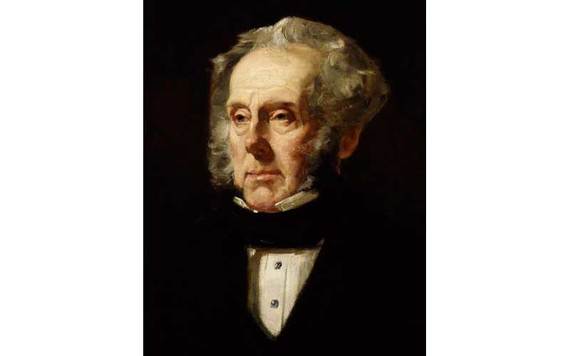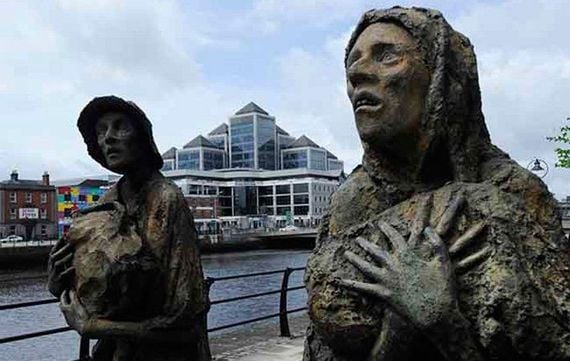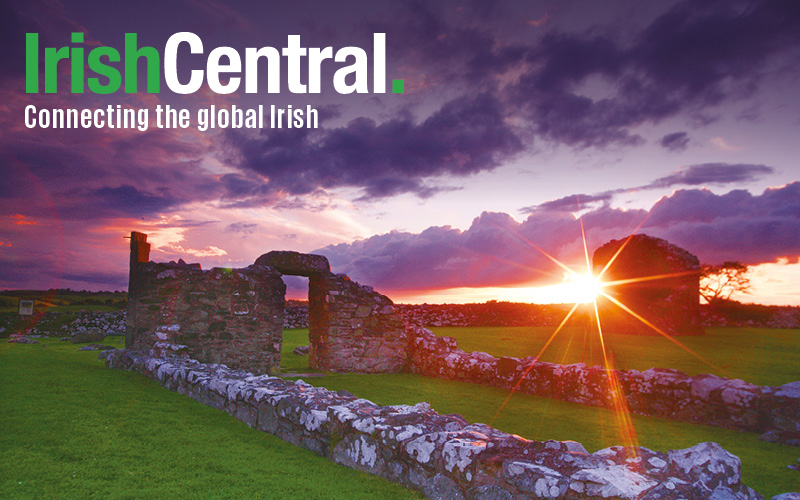1847 was known as Black '47 in Ireland, the most disastrous year of the Great Hunger, which was itself the most calamitous social disaster in Europe in the 19th century
A million dead, a million fled, the saying goes. The drop in the population within five years was roughly the same as a low-level nuclear strike. Ireland still has not recovered from it.
Last week three of the dead, all children, were identified, having been hastily buried on a remote beach in Canada in 1847 and then lying forgotten there for 164 years.

Actors recreate and commemorate with scenes from Great Hunger.
All three (two seven-year-old boys and one 11-year-old boy) had been former tenants of the notorious English bigot Lord Palmerston (later to become the Prime Minister of England) on his penny pinching Irish estate, where they had lived their short lives like little barnacles stuck to a whale.
All three boys were obviously malnourished scientists said, all had been fleeing the Great Hunger when their, far from seaworthy, ship the Carricks of Whitehaven was sunk in sight of Canada, in 1847.
Their entire lives had been ruinous and their deaths were a further cruelty. What did they ever know of this world, these luckless Irish children, but privation, starvation, and misery?
To be banished from their own country by a foreigner and then to drown in freezing waters in a gale at sea within miles of salvation? It's simply too much to think about.

Palmerston's reputation for heartlessness has been handed down to us over 172 years and it is quite certain that he never gave a moments thought to the cruelty or the exploitation he perpetuated. Starving or drowned Irish children were no loss to his world or his bank balance.
The callous disregard he had for the Irish in the 19th century is echoed now again in the disregard ardent Brexiteers have for the fate of Ireland and the peace process in the 21. The circumstances and players have changed but the certain hardness of mind has been inherited.
The details of this fatal voyage, one of thousands in the period, is instructive. The bones of the first three children were washed up on a beach at Cap-des-Rosiers after a storm in 2011. Then remains of 18 others, mostly women and children, were later uncovered by archaeologists on the same beach in 2016.
187 people had begun the voyage and only 68 had survived.
No one cared. When the starving Irish reached American shores they were treated like vermin. Political organizations agitated for their removal, marchers called for their deportation, in 1847 alone 37,000 Irish immigrants arrived in Boston, increasing the city’s population by more than 30 percent.

It soon became the largest mass migration in history. If you live in North America and have Irish ancestry then you carry their epic journey in your bones. If you grew up in Ireland then you should see us in all of those desperate inflatable dingies trying to cross the Mediterranean into Europe.
You should us in the migrant caravans trying to cross the southern border into the United States. What they are now, we were once. We should help, not hinder.
And to make that point and to ensure we carry that legacy and its lessons forward we should ask Canada to repatriate the timbers from the ill-fated Carricks Of Whitehaven shipwreck back to their origin point in County Sligo.
Irish Minister for Culture Josepha Madigan has also thoughtfully suggested a memorial be considered for the spot in Canada where the Irish migrants were originally interred. But perhaps commemorations on both sides of this voyage would be a somber and fitting tribute.
History needs a witness and what better way to mark the lessons of the short and cruel lives these Irish children and their parents led than to maintain a piece of the ship that transported them from one needless tragedy toward another - and hold a lasting vigil on either side of their fatal voyage.
Do you agree? Should the timbers of this ship be returned home to Ireland? Let us know how you think these immigrants should be commemorated in the comment section below.




Comments